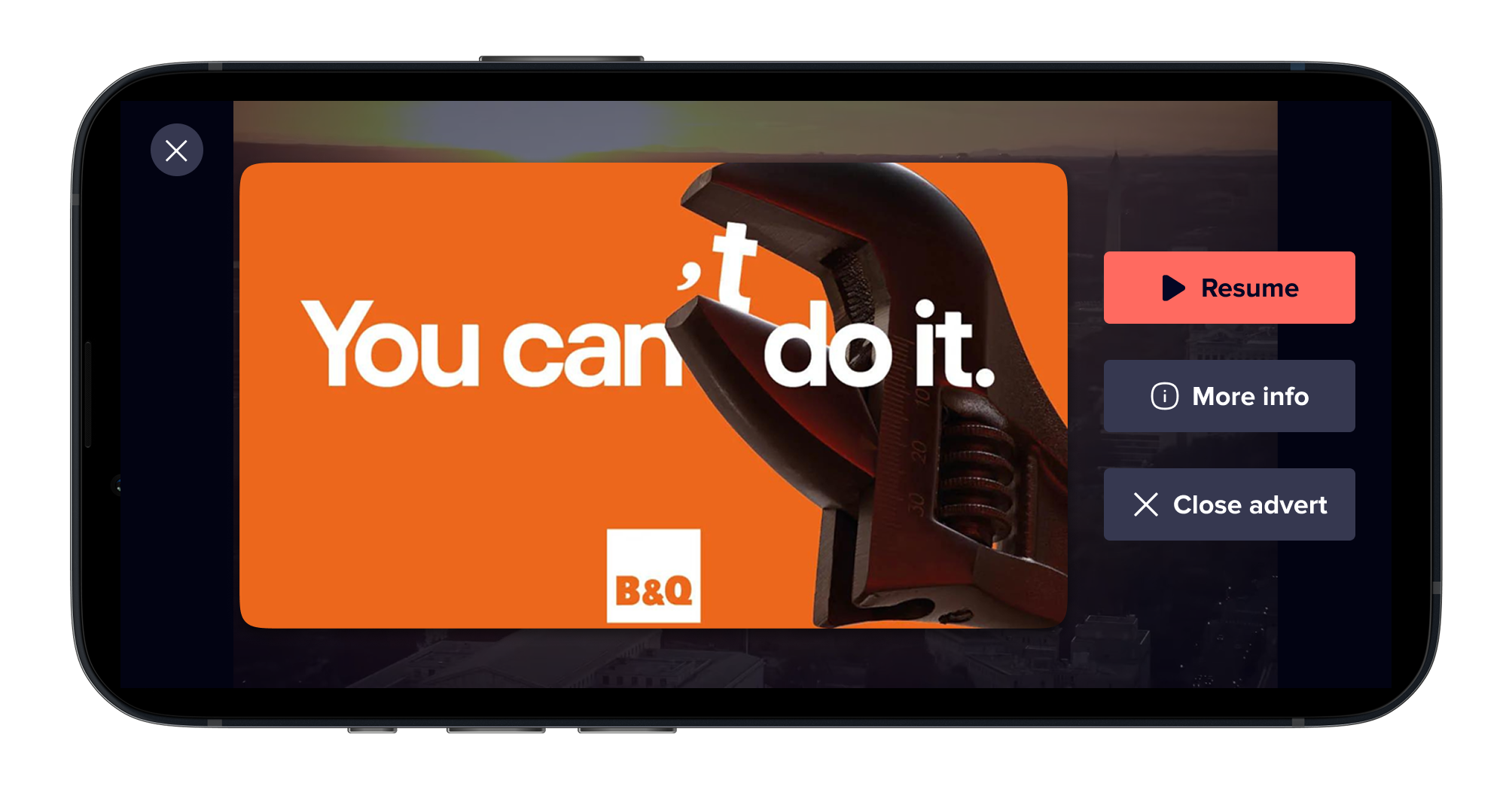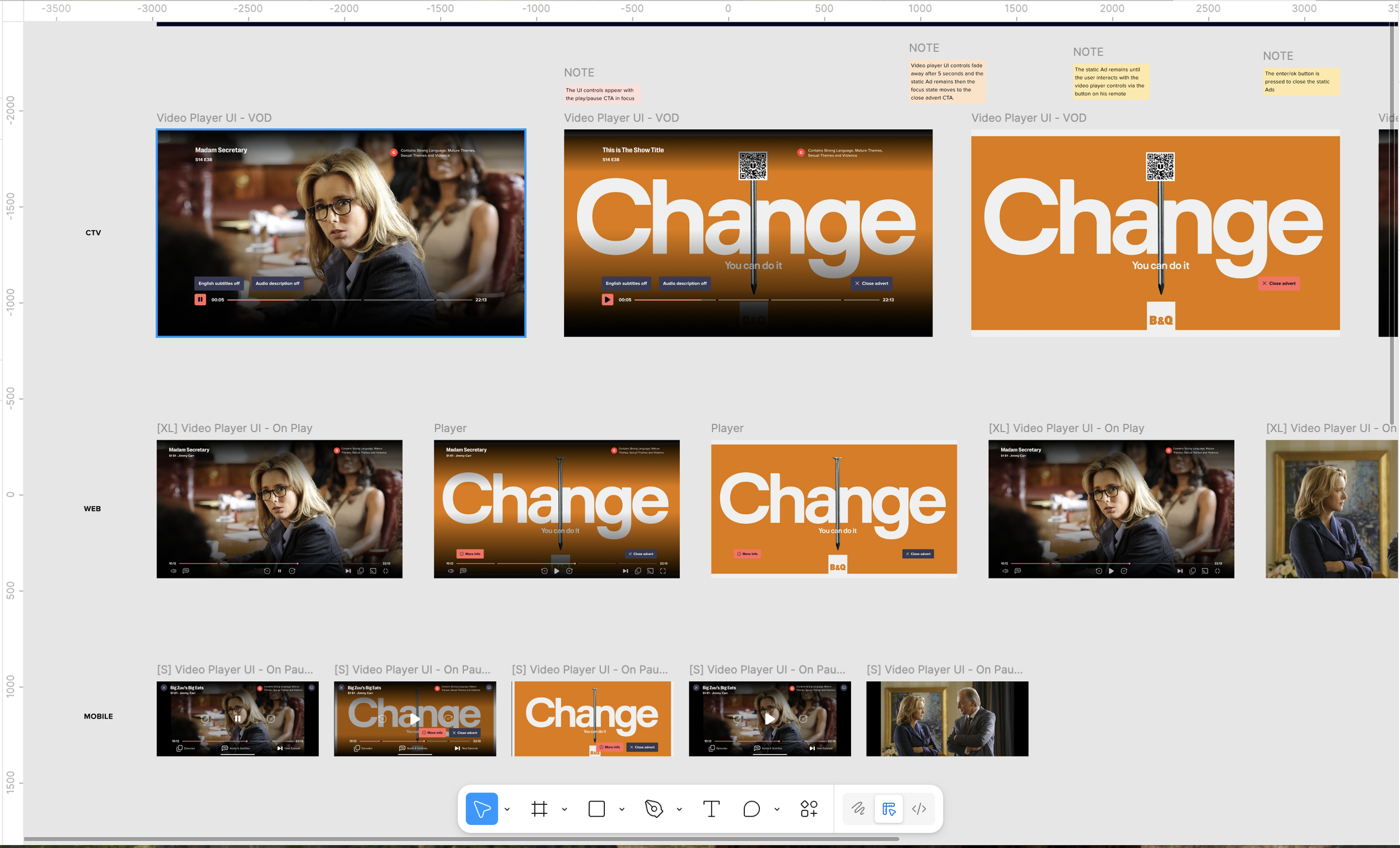Case Study - WIP
Video Play/ Paused AD
Devices
💻 📺📱All platforms
Role
UX/UI Designer
Timebox
≈ 3 Sprint (6 weeks)
Overview
In efforts to boost adverts revenue for UKTV’s video streaming app U there was an introduction of paused adverts, whereby an advert appears on screen once the user has paused playback. Due to the disturbance this would cause to the user, it initiated a request for a design spike to explore potential solutions and the impact it would have on our users.
My Approach
Research and Insights
What would be the potential impact of Paused Ads on U’s users?
Why users pause content?
How do Competitors handle this behavior?
Design Exploration
Explore different ad formats (overlay vs. sidebar over vs under video controls).
Experiment with ease of dismissing ads to balance ad visibility and user control.
Test contextual placements (e.g. less intrusive positions on the screen).
Prototype
Test feasibility across breakpoints; consistency, accessibility, and ease of dismissal.
Implementation & Post-Launch
Iteration and adjust in the development process and UAT.
Stakeholder concerns
Will our player will accommodate the asset behaviours on CTV, mobile and web with our current specifications?
Do we need to redesign the space with our player controls to suit the specifications?
Is this likely to impact known future UI/UX plans or add constraints to UI flexibility?
Research and insights
What would be the potential impact of Paused Ads on U’s users?
To get a sense of the impact of introducing pause ads into the video player from a viewer experience standpoint, I analysed U’s video completion rate, which averaged around 72.97% over a three month period. Examining viewer engagement data, I observed that users rarely pause during playback. When they do, it's typically at the beginning or end of a show. This suggests that the frequency of encountering a static ad would likely be very low.
For this new feature to fit in well, the integration of a static ad needed to be intuitive. This way, when someone pauses a show, they can easily jump back to playing content within as minimal clicks as possible, as a poor execution of this could lead to a challenging learning curve for our users.
Research and insights
Why users pause content?
Our viewers are familiar with the presence of Ads and understand what to expect from a free Ad video on service. But challenges lie in creating new expectations so understanding why users pause was really important in designing this feature for the video player.
Survey reports conducted revealed,
paused “because I need to do something away from the screen”
paused “because I needed to use the toilet”
paused “because I’m a slow reader and wanted to read something in the scene”
paused “to make a quick snack”
Research and insights
How do Competitors handle this behavior?
Competitor research revealed that each service handles this feature differently. However, a common weakness stood out: the ads were difficult to dismiss and felt intrusive. While it's understandable that these services aim to increase revenue through advertising, this approach often comes at the cost of user experience, ultimately diminishing the overall quality of the device interaction.
Design Exploration
Ease of dismissing
During the design exploration, several issues were uncovered. For example, the focused state was not accessible against the various possible background colors of the static ads. This design flaw would create too many friction points for users, leading to increased drop-off rates and causing them to stop watching content. Since altering our design system to meet these requirements wasn’t an option, I had to experiment with and test alternative solutions.
Prototype
consistency, accessibility, and ease of dismissal
Prototyping played a key role in the development process. I worked closely with the developers to perfect the integration, which led us to make slight adjustments to the designs. In practice, the responsive web required an additional layout to properly accommodate all breakpoints.
Conclusion
For most users paused ads don’t affect viewing experience. However, some expressed frustration when pausing to look at something on the screen, only to be interrupted by an ad. With a strong focus on user behavior, I acknowledge that habits play a crucial role in shaping expectations within digital experiences.While referencing popular streaming platforms can offer useful guidance, the real challenge lies in crafting experiences that not only meet current expectations but also help foster new, intuitive habits. This project reinforced the importance of balancing innovation with empathy.
Post launch





